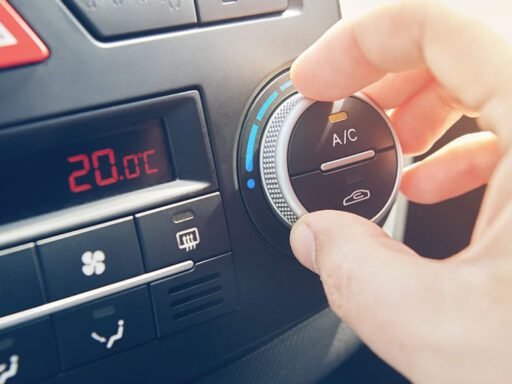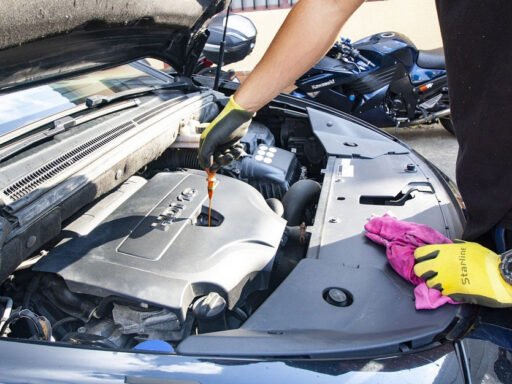Cars today are a lot more advanced than they used to be. Decades ago, vehicles were mostly mechanical, with drivers only needing to worry about things like oil changes, belts, and brakes. Now, modern cars are packed with electronic systems that control everything from engine performance to safety features and even comfort. These systems make driving safer, more efficient, and more enjoyable, but they also introduce new types of problems.
When something electronic goes wrong in your vehicle, it can feel confusing. Warning lights might flash on your dashboard, your car may run unevenly, or certain features might stop working altogether. While these issues can be frustrating, many of them are fairly common and often connected to just a few major systems. By understanding how your car’s electronics work, you can better recognize when something is wrong and take steps to fix it before it becomes a major expense.
One of the most important electronic components in your vehicle plays a big role in how it performs. Knowing how this system works and how it can fail is the first step in understanding today’s most common electronic car issues.
The Role of the PCM
One of the most common electronic issues in vehicles starts with the powertrain control module, often referred to as the PCM. This system functions as the brain of your car, overseeing how the engine and transmission work together. It gathers data from a variety of sensors and then uses that information to manage things like fuel injection, ignition timing, and emissions control. Without the PCM, your car wouldn’t be able to run smoothly, or in some cases, at all.
When the PCM malfunctions, it can trigger a wide range of issues. You might notice poor fuel efficiency, difficulty starting the engine, or your vehicle stalling unexpectedly. Sometimes, the first sign of trouble is the dreaded “check engine” light glowing on your dashboard. Because the PCM controls so many functions, even a small glitch can throw off your car’s performance.
In many cases, these problems can be diagnosed and corrected with professional help. Sometimes the PCM itself needs to be repaired or replaced, while other times the problem is linked to faulty sensors feeding bad data into the system. Either way, the PCM highlights just how critical electronic systems are in keeping your car reliable.
Sensor Failures and Their Impact
Another common source of electronic car issues is sensor failure. Modern vehicles rely on dozens of sensors to monitor everything from oxygen levels in the exhaust to the speed of each wheel. These sensors send information to the PCM and other control units, allowing your car to adjust and respond in real time.
When a sensor fails, the system can no longer receive accurate information. It can lead to problems such as poor acceleration, rough idling, or increased fuel consumption. For example, if your oxygen sensor malfunctions, your car may use too much fuel, which not only hurts your gas mileage but also increases emissions. Similarly, a faulty mass airflow sensor can cause hesitation or stalling, leaving you stranded at the worst possible time.
The good news is that sensor issues are often straightforward to fix once properly diagnosed. Mechanics use specialized diagnostic tools to read error codes from your car’s computer, which point directly to the sensor causing trouble. By catching these issues early, you can avoid more serious damage to your engine or transmission.
Battery and Alternator Problems
While control modules and sensors get a lot of attention, the battery and alternator remain the backbone of your vehicle’s electrical system. Without a strong, fully charged battery, your car won’t start. Without a properly functioning alternator, your battery can’t stay charged, and your car’s electronics won’t have the power they need.
When either of these components begins to fail, you’ll notice a variety of issues. Dimming headlights, flickering dashboard displays, or trouble starting the car are all common warning signs. In some cases, a weak battery can mimic other electronic issues, leading drivers to believe there’s a more serious problem when the fix is as simple as a replacement.
Regular maintenance checks can help you avoid these headaches. Testing your battery’s voltage and having your alternator inspected during routine service appointments ensures your car’s electrical foundation stays strong. Because so many systems rely on steady power, keeping these components in good shape is one of the simplest ways to prevent bigger problems.
Wiring and Connection Issues
Not all car troubles come from high-tech components. Sometimes, the problem is as basic as a worn-out wire or a loose connection. Over time, wires can become corroded, frayed, or disconnected, especially in older vehicles or in areas where road salt is common.
When wiring problems occur, they can create intermittent issues that are difficult to diagnose. You might notice dashboard lights flickering on and off, random stalling, or electronic systems that work one moment and fail the next. Because these symptoms often mimic more serious failures, drivers sometimes spend money chasing down issues that ultimately turn out to be a simple wiring repair.
Inspecting your vehicle’s wiring regularly can save you from this frustration. Mechanics can use diagnostic tools to trace the problem back to its source, but even a visual inspection of wires and connectors can sometimes reveal the issue. Taking the time to address wiring problems early prevents them from escalating into costly repairs.
Infotainment and Comfort System Glitches
In addition to critical systems like the engine and transmission, modern cars also come with a variety of electronic features designed for comfort and convenience. Infotainment systems, Bluetooth connectivity, GPS navigation, and climate control are now standard in many vehicles. While these systems don’t impact safety directly, glitches can still be frustrating for drivers.
Common issues include frozen touchscreens, poor phone connectivity, malfunctioning speakers, or unresponsive climate controls. These problems often stem from software glitches, wiring issues, or faulty components within the system itself. While not as urgent as engine-related failures, they still affect the overall driving experience and can make long trips less enjoyable.
Staying on top of software updates and having your systems checked when problems first appear can help prevent ongoing frustrations. Just like with other electronics, the sooner issues are addressed, the easier and less expensive they are to fix.
Electronic systems have transformed cars, making them smarter, safer, and more efficient. But with these advancements come new challenges. From faulty sensors to weak batteries, wiring issues, and infotainment glitches, today’s drivers need to be aware of the most common electronic-related car problems.
The key to managing these issues is early detection and regular maintenance. Warning lights, unusual sounds, or inconsistent performance should never be ignored. By paying attention to these signs and seeking professional help when needed, you can keep your vehicle running smoothly and avoid costly breakdowns.
While electronic issues may seem complex, they are part of the reality of modern driving. With the right knowledge and proactive care, you can minimize their impact and enjoy the many benefits today’s vehicles offer.






